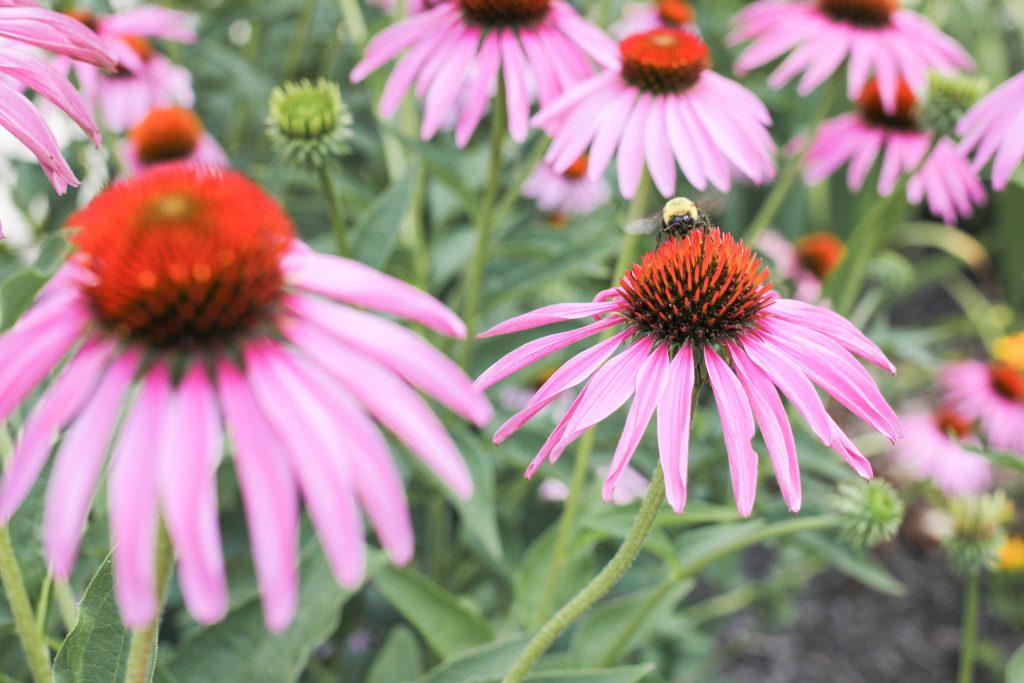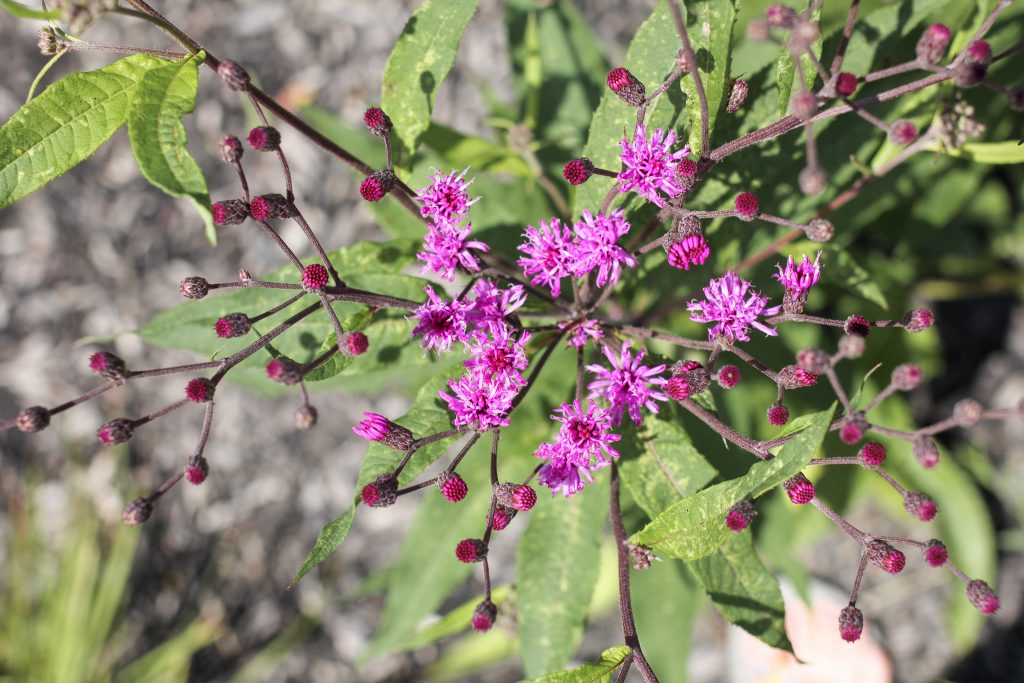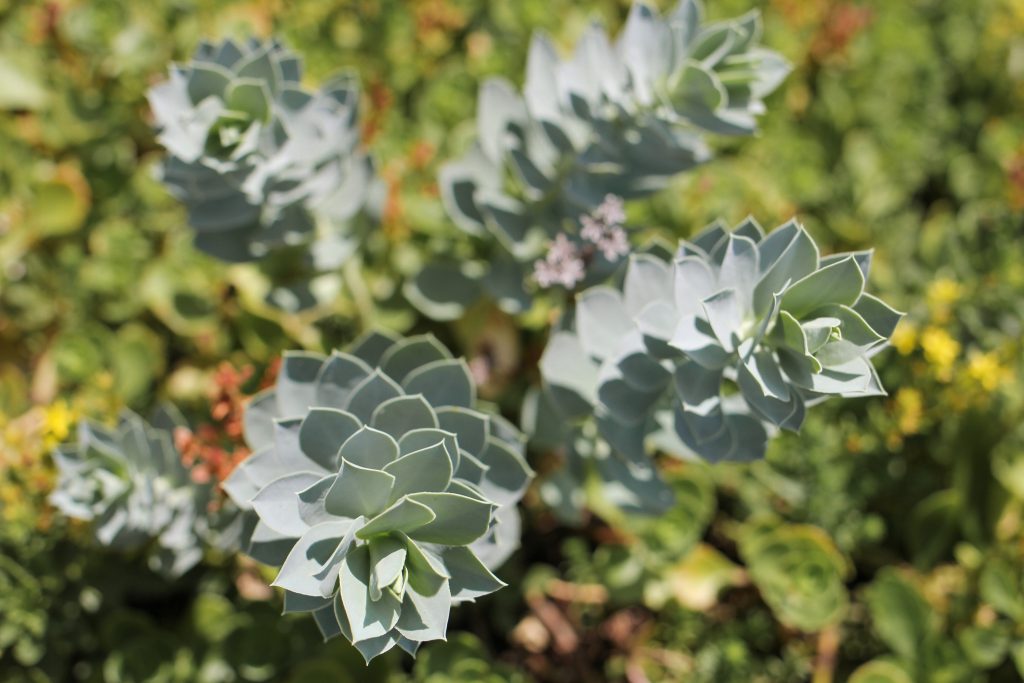Native plants do it all: preserve, protect and beautify
Native plants serve both beauty and function.
They are multi-colored, come in a range of sizes and, as they are generally non-fussy, are the choice of people who do not have green thumbs! When planted along the banks of a stream or lake, wildflowers and other native plants exponentially increase their own worth. But how can a humble garden of foxglove, purple coneflower and butterfly bush do all this?

Healthy land management
Long before sediments reach the water, healthy land management promotes better nutrient and sediment filtration.
Soil and roots of plants act as a natural filter, slowly purifying many imperfections (like some forms of fertilizer) from surface water. The roots hold back larger particles and chemicals and strip them from the water before they reach a lake or stream.
Not only that, native flowers, bushes and trees are ready-made homes for native creatures. They provide nectar for butterflies and bees, and habitats and meals for insects and small animals and reptiles. Native plants help prevent soil erosion, too.

Native plants, working overtime
Your home or business does not need to be on a lake or close to a stream to have wildflowers, shrubs and trees!
Native plants can help you (or your company) conserve water because they require less irrigation than non-native plants: they are already adapted to northcentral Indiana weather. For the same reason, these plants do not require fertilizer to grow. Flowering plants will bloom cheerfully until you cut them back.
In their own way, native plants work overtime to help keep the lakes clean, healthy, safe and beautiful.

Invasive vs. native plants
Invasive plants are those that compete with and crowd out native species.
Although they do not always cause visible problems, they can change the habitats and meal options for native critters, clog waterways, and cause endless problems for farmers.
Here are a few examples of invasive plants common in our area:
Learn more about invasive plants and how to spot and replace them by visiting the DNR’s website.
Clean lakes are the heartbeat of Kosciusko County, so it is important to protect them in any way we can. By limiting or preventing use of invasive plants and cultivating flowering dogwood, spicebush, wild columbine and other native plants, you are doing your part to protect the waterways. Start today! Your landscaping at home or at the office can set an example for others to follow. Visit your local garden center and ask them about native shrubs, flowers and trees. Here are a few to get you started:
- Syracuse: Myers Landscape Nursery (574-372-5100)
- North Webster: Clayton Garden Center (574-834-2249)
- Silver Lake: Lakeland Nursery (260-839-4315)
- Warsaw: Open Air Garden Center & Greenhouses (574-269-4661)
- Warsaw: Chapman Lake Nursery (chapmanlakenursery@gmail.com)
- Fort Wayne: Heartland Restoration Services (260-489-8511)